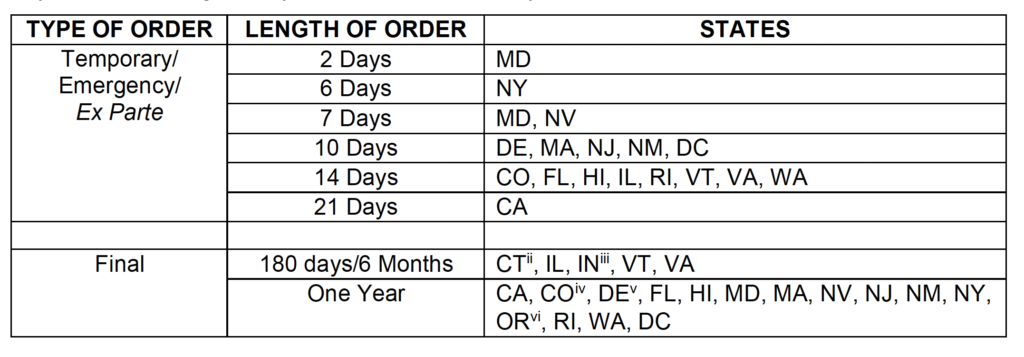By Bill Swinford
In the wake of the murders in Uvalde, Texas this week, state policymakers may consider reviewing the current state of Second Amendment law and judicial decisions.
Because the Constitution is silent on the regulation of firearms outside the Second Amendment, most law and regulation occurs at the state and local level. However, there are several federal firearm statutes, such the Brady Handgun Violence Prevention Act. These laws generally find their constitutional justification in the Commerce Clause. (The Constitution gives Congress the power to “regulate commerce among the several states,” so it has long been legally accepted that Congress can regulate firearms in some ways, as they are a bought/sold commodity that regularly crosses state lines.)
For the first 150 years of the Constitution’s existence, the U.S. Supreme Court turned away legal challenges to state and local regulation of firearms. This stance basically conceded broad regulatory authority to the various levels of government. The court did not enter the legal conversation until 1939.
In U.S. v. Miller (1939), plaintiffs challenged the federal National Firearms Act of 1934, which required certain types of firearms to be registered with the federal agency now known as the Bureau of Alcohol, Tobacco, and Firearms. The Supreme Court (8-0) upheld the statute, finding no independent right to own a gun outside a “well regulated Militia,” which the court said was equivalent to a government unit. The court also discussed the types of weapons required to be registered and found it appropriate that the government would impose such a thing.
The Supreme Court regarded Miller as “settled law” for nearly 70 years, regularly refusing to take up challenges to federal, state and local regulations. As a result, governments imposed a wide range of regulations and prohibitions. As with other policy areas dominated by governments below the federal level, there was considerable variation.
For a case to make its way onto the docket, four of the nine Supreme Court justices have vote to support a hearing. Between 1939 and 2008, there were not at least four votes for revisiting the holding in Miller.
The District of Columbia had an ordinance for several years during that timeframe that required potential gun owners to procure a license. In addition, licensed guns had to be kept “unloaded and dissembled or bound by a trigger lock or similar device unless they are located in a place of business or are being used for lawful recreational activities.”
Dick Heller, a local law enforcement officer, challenged the D.C. ordinance as a violation of the Second Amendment. The Court agreed to review the ordinance and revisit the holding in Miller.
In Heller, the Court (5-4) decided there is, in fact, a right to own a gun apart from service in a state militia. The Court argued that the introductory phrase does not reference a government-run military entity, but instead references the reality that at the time the Constitution was written there was a long tradition of private gun ownership. In addition, part of the purpose of free ownership was to enable private citizens to form militias to resist central government oppression (thus “necessary to the security of a free State”).
The majority clarified that the Second Amendment is not “absolute” (i.e. does not prohibit all gun regulation). So the current debate about the extent of constitutional gun regulation focuses there. For example, the majority of the court noted:
- “…[N]othing in our opinion should be taken to cast doubt on longstanding prohibitions on the possession of firearms by felons and the mentally ill, or laws forbidding the carrying of firearms in sensitive places such as schools and government buildings, or laws imposing conditions and qualifications on the commercial sale of arms.”
- The kinds of firearms protected are the ones “in common use at the time” of the framing of the Constitution. “We think that limitation is fairly supported by the historical tradition of prohibiting the carrying of dangerous and unusual weapons.”
Finally, the Court has long held that when a personal right is at issue, government regulation must be supported by a “compelling” reason and the goal must be pursued by “narrow” means. For example, the court made clear (above) that prohibiting firearms in government buildings is “compelling.” However, the court left some questions undetermined — for example, how far away from a government building the prohibition would extend.
The Supreme Court heard oral arguments on Nov. 3, 2021 in New York Rifle and Pistol Association v. Bruen. Here, the plaintiffs challenged a New York City ordinance that requires applicants for a handgun license to show “proper cause” for handgun ownership, indicating a special need for protection. A majority of the justices seemed skeptical of the ordinance’s constitutionality, but the justices seemed to be gravitating toward a narrow ruling. For example, the justices were quick to note the plaintiffs were not challenging other New York ordinances, such as those restricting the carrying of firearms in “sensitive places.”
A decision from the court in Bruen is expected in the next few weeks. It may further clarify the legal landscape.
State policymakers can learn more about the current legal landscape of gun regulation by visiting the following resources:





